If you’ve been around here for a while, you know that I spend a lot of time in the Middle East. Countless people have asked me, is solo female travel in the Middle East safe? What should a solo female traveler in the Middle East expect? And, why would you want to go there solo?
It’s probably not a surprise, many travelers have concerns about visiting the Middle East, both men and women alike. And, frankly, I can understand that.
Particularly so when these concerns come from my fellow solo female travelers.
The Middle East is unfortunately not a stranger to political instability, and frequent travel advisories go out from the US State Department. Westerners are constantly bombarded with visuals of outright war in the region, as well as stories of women’s oppression.
And while I can’t deny that yes, these things do happen in some places — I can say it is not “the norm.” Nor is it so black and white.
If you are considering traveling the Middle East as a woman, I am here to help you. I have spent more than a decade traveling the Gulf region, and even longer in the surrounding areas.
Based on thorough personal experience, here are my uncensored thoughts on traveling the Middle East as a solo female.
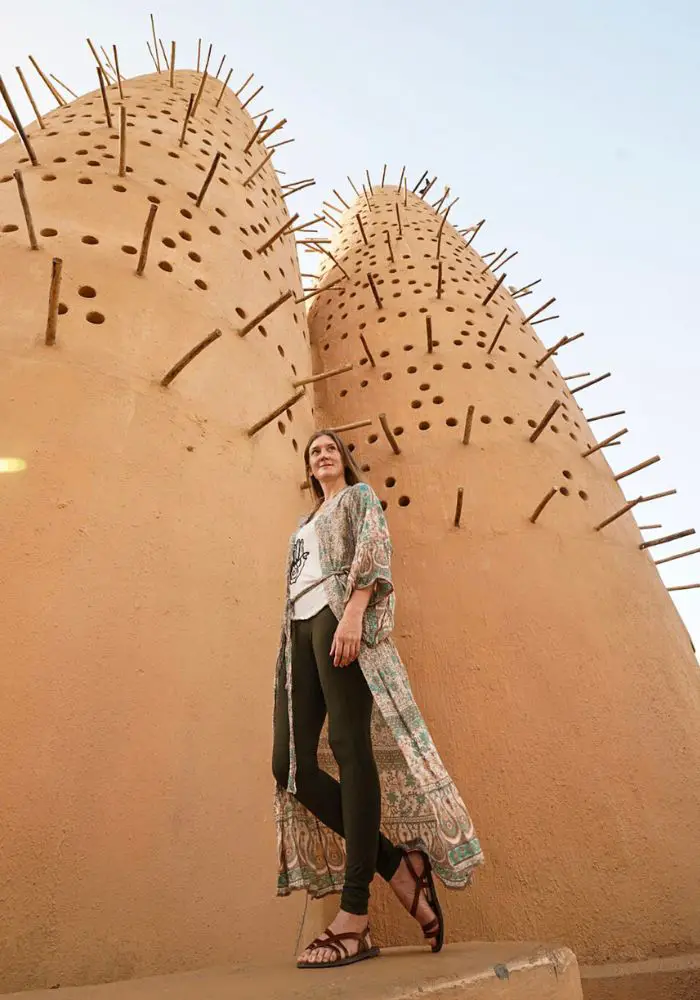
5 Middle East Essentials I Always Pack in My Bag:
✅ A loose kimono for easy modesty
✅ Breathable lightweight scarves for mosques and conservative areas
✅ A wide brim hat to shield the sun
✅ Rugged trekking sandals for rocky terrain
✅ A refillable water bottle to stay hydrated all day
What Countries are in the Middle East?
First and foremost, it’s important to recognize that “The Middle East” is tough to define. Some maps include North Africa, some include Pakistan and Afghanistan, and others do not.
So, there is some discrepancy as to which countries are included, depending on your source. For the purposes of this article, we will go by Encyclopedia Brittanica’s definition.
According to good old Britannica, The Middle East is said to contain the following countries:
- Afghanistan
- Algeria
- Bahrain
- Cyprus
- Egypt
- Iran
- Iraq
- Israel
- Saudi Arabia
- Sudan
- Syria
- Tunisia
- Turkey
- United Arab Emirates
- Yemen
As you can see, the term “The Middle East” encompasses a pretty diverse group of countries, all with their own cultures, religions, languages, and landscapes.
Consider how different a visit to Afghanistan would be from a visit to Dubai, UAE. Or, Istanbul, Turkey compared to Aleppo, Syria.
Night and Day.
So when talking about safety, politics, human rights, and more, it’s simply not accurate to lump every one of them together as a whole…. nor to assign a blanket label of “not safe” across the board.
Now, full disclosure – while I have spent significant time in this part of the world, I have not traveled to every single one of the countries listed above (though I hope to!)
At the time of writing, the countries that I have the most experience in are Saudi Arabia, Oman, Egypt, Morocco, Kuwait, Bahrain, Qatar, Jordan, Turkey, and United Arab Emirates. I’ve also spent time in Afghanistan and Pakistan.
So, while your worries and hesitation are completely valid, I’m here to tell you that solo female travel in the Middle East is absolutely worth your while. Traveling the Middle East, as a woman no less, is unlike traveling in any other part of the world.
From religious and historical sites, to unbelievable landscapes, to the warm and welcoming culture – there are so many beautiful places to see in the Middle East.
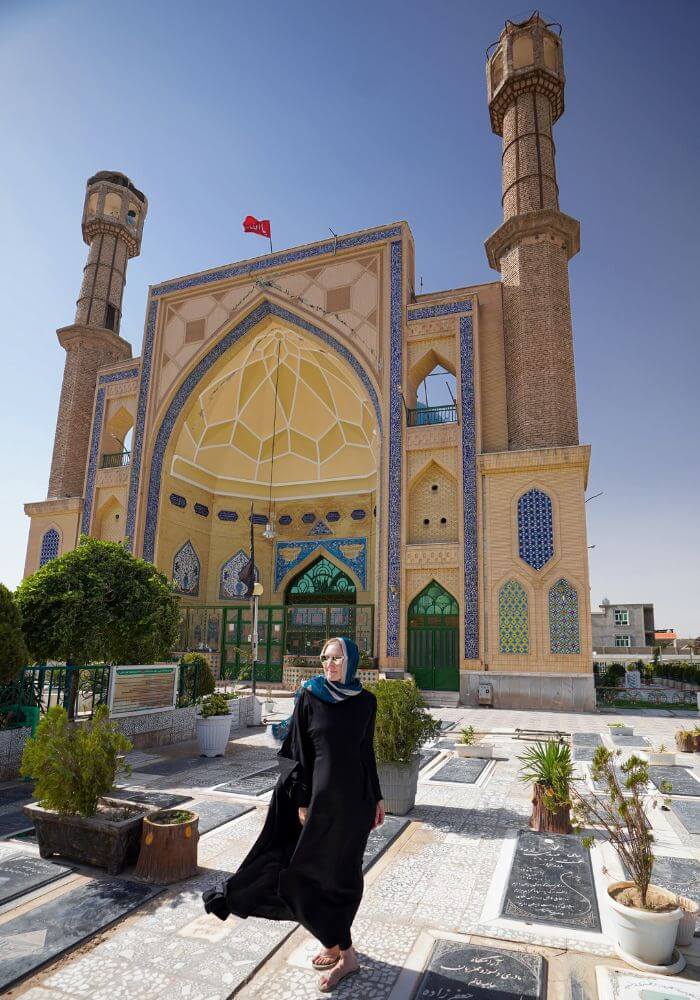
Safety in the Middle East as a Solo Female Traveler
One of the most common questions I get as a solo female traveler in the Middle East is, “Is it safe?” I completely understand why I get this question, but you might be surprised by my answer.
YES. For the vast majority, yes.
I have had small incidents here and there, such as random scams in Egypt or the extra preparation it takes to travel Afghanistan as a woman. But, none of these felt unreasonable in the grand scheme of travel.
The trick to feeling safe as a solo female in the Middle East is to do your research. Respect not just local laws, but also local customs. Getting to know the local feeling on modesty, clothing choices, public displays of affection, alcohol, and more will set you up for success in most to all regions.
As an American traveler, it’s always wise to take a quick glance at the US Department of State’s website for any major issues that you may be unaware of. Here you’ll learn about recent incidents or areas to avoid.
Which brings me to another great point . Most countries do have safe areas to visit, even if particular regions are not so safe. For example, at the time of writing, much of mainland Yemen is not currently safe to visit. However, Socotra Island is.
So again, research is your friend.
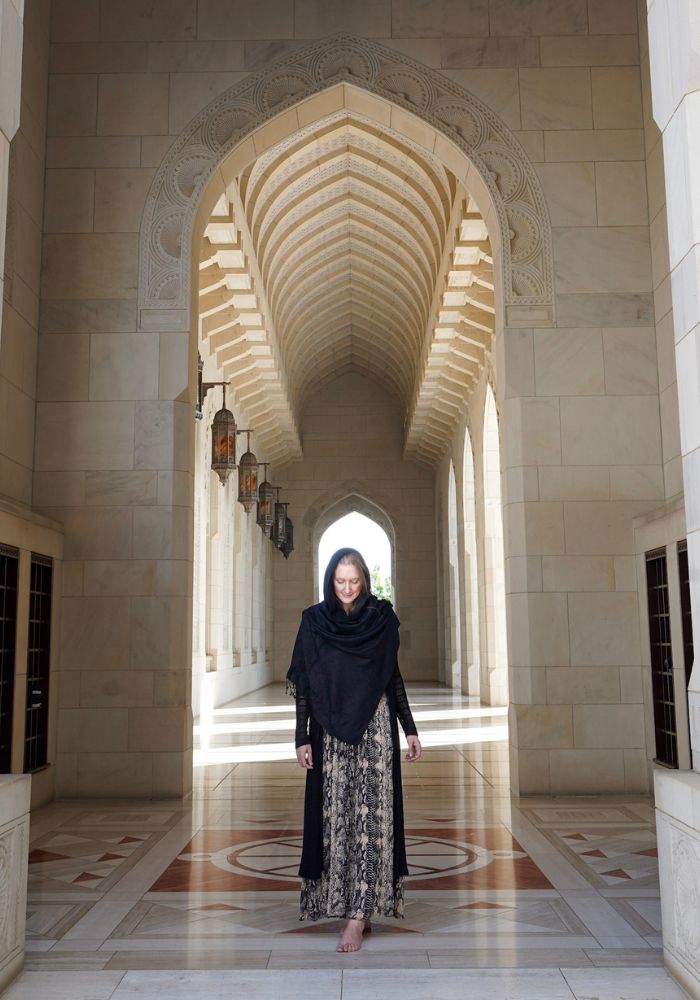
Top Tips for Women Travelers in the Middle East
1) Download Google Maps‘ offline maps of your destination before you go. I recommend doing this even if you plan to get a local Sim card, because you just never know how good your signal will be.
2) Research the best location to book your accommodations. Check what sites, shops, and transportation is nearby. Choosing an area within walking distance of local souks, shops, and historic sites can save a ton of money on transportation and make your life much easier. This is exactly what I did in Kuwait City and it kept my budget intact.
3) Speaking of transportation, what are your local options? Do you feel comfortable renting a car? Can you navigate the local metro or bus system? Note that while Uber is only available in some countries abroad, many Middle Eastern countries use Careem (one of my favorite travel apps.)
Pro Tip: Check out my favorite money-saving trip planning websites here!
4) In most areas throughout the Middle East, alcohol is fairly taboo. Public displays of affection are rare or nonexistent. And, in some cases, friendships between men and women are unusual. Check up on the local customs of the specific country you plan to visit.
5) Always err on the side of modesty as far as clothing is concerned. This way, you avoid unwanted attention as well as avoid offending locals.. I always pack multiple layers and options for modest covering depending on my destination. Below I will break down exactly what clothing women should wear in the Middle East.
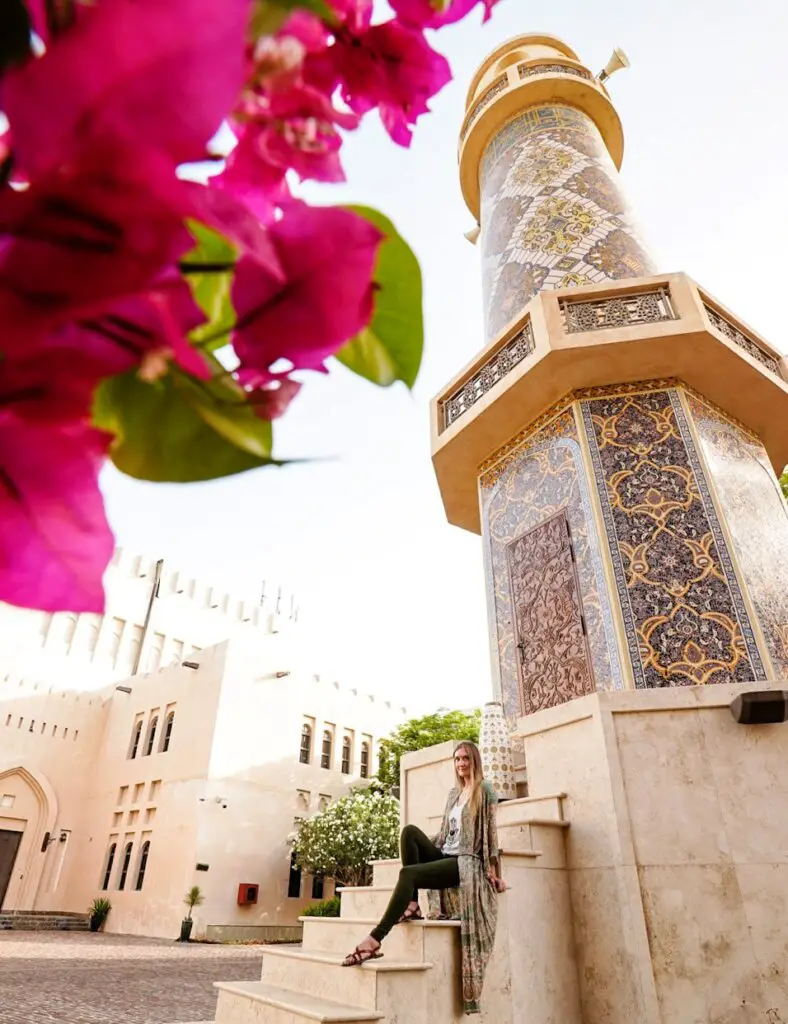
What to Wear as a Solo Female Traveler in the Middle East
One very important note about clothing in the Middle East. As mentioned earlier, this region is vast, so the specifics and leniency may differ from country to country (and even city to city.)
However, here are some of my most well-traveled items that have come with me to some or all of the Middle Eastern countries I’ve visited.
- Lightweight scarves – I keep these on hand at all times, whether for entering mosques or for general use in conservative countries. I specifically love this one because of how lightweight and breathable the fabric is in this region’s hot weather.
- A loose kimono – an absolute must for most countries in the Middle East. I own many of these at this point, and I always have at least one in my bag, if not more. Throw it on over your clothing to camouflage curves under loose flowy fabric.
- A long dressy kimono – Another type of kimono style with many color options.
- Long dresses – A maxi dress is a simple, easy choice for women traveling in the Middle East. I wear these either alone or with a kimono on top, depending.
- A maxi skirt – Maxi skirts can be a great idea, particularly if you are traveling in the summer months. A flowy skirt keeps your skin cool under the hottest sun.
- Leggings – You might be surprised to learn that I wear leggings often in the Middle East. The key to doing this properly is to wear a long loose top that covers your waist and curves completely. In places like Iraq and Afghanistan, they can even be worn under an abaya.
- Palazzo pants – Another absolute staple for me in hot but conservative countries are loose and comfy palazzo pants. A pair like this is light, breezy, and loose on the legs.
- One casual hoodie – I always wear a hoodie like this on the flight anyway, so it is an easy option for covering arms and shoulders once in my destination.
- Loose t-shirts – It’s best to avoid skin-tight tops and make sure that shoulders and cleavage is covered. Loose t-shirts and blouses can make your life simple.
- A wide brim hat – A hat is definitely necessary for hot days, especially if you plan to explore in the desert. This one covers your face, ears and neck in a small bit of shade nicely.
- Rugged sandals – A pair of rugged sandals are great for rocky or dusty countries. The ones linked here are some of my favorites because they can be worn both in the city and for hikes or dirt roads. Very versatile, I would say!
- Strappy sandals – These have a permanent place in my suitcase nowadays. They’re a simple, easy choice for walking around cities and sous, and for easy slipping on or off at mosques.
- Loose black abaya – Admittedly I don’t pack an abaya for every Middle Eastern country, but if you know you will spend a lot of time in conservative countries like Afghanistan or religious cities like Madinah, then it is a must.
When in doubt, keep covered and you’ll be fine.
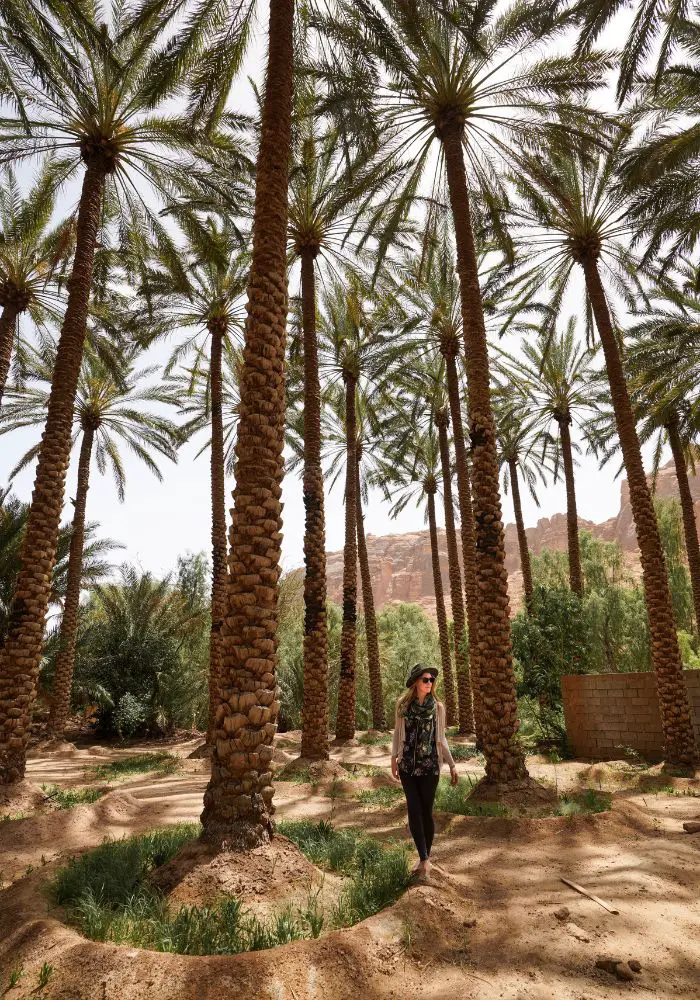
How To Stay Safe in the Middle East as a Woman
I think its unfortunate that this entire region has a reputation for being “unsafe.” Let’s start there.
The truth is, in most countries and areas, you will be completely safe. For example, the cities of Abu Dhabi, Doha, Dubai, Sharjah, and Ras Al Khaimah frequently appear at the top of global safety lists.
Of course, solo females should still always pay attention to their surroundings and trust their gut when something feels off. The same rules apply in the Middle East as elsewhere – don’t drink too much, don’t walk in sketchy areas alone at night, and don’t advertise that you’re solo.
Additionally, while I didn’t personally have any true issues in Egypt or Morocco or elsewhere, note that others have experienced such things. So always be mindful of scams, pickpockets, and men who are a little too friendly.
Pro Tip: Be sure to check out my most recommended travel safety gear before you go! It covers personal safety, pickpocket-proof gear, and health and wellness.
The concept of traveling alone as a woman is highly unusual in the Middle East, so you are a bit of an oddity.
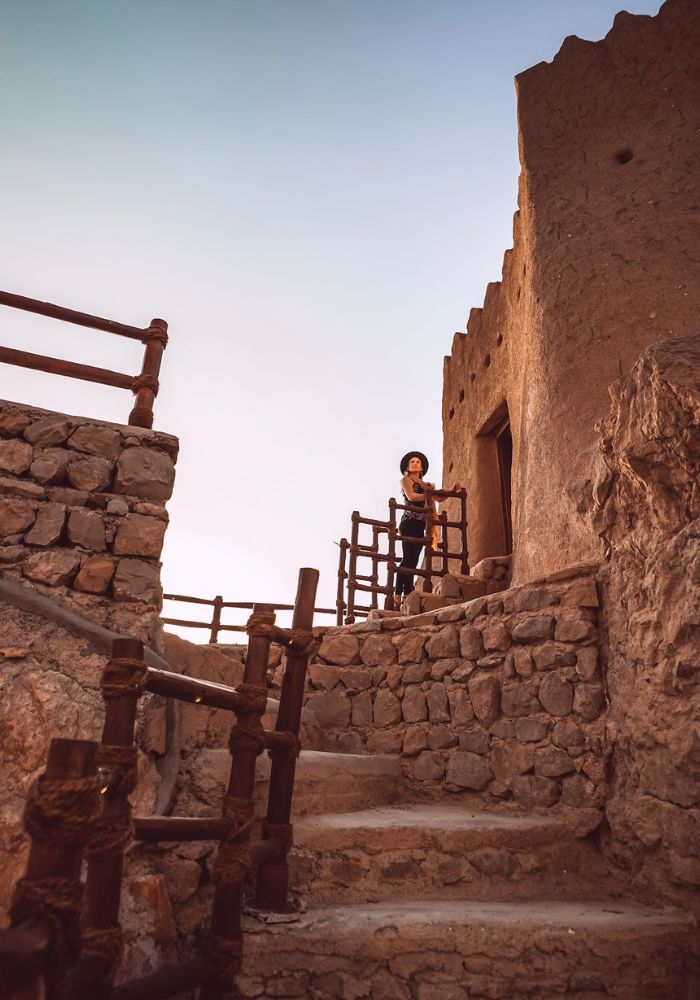
Is Alcohol Allowed in the Middle East?
Each country has different rules and policies on consuming alcohol or bringing alcohol into the country. Absolutely do your research before attempting anything alcohol-related. You can potentially get in some serious trouble if you don’t.
If you are a traveler who loves nightlife, well – the Middle East is certainly not known for it’s party spots. But there are a few places that you can find some. For example, there are dance clubs in the UAE and alcohol is available in Dubai, with restrictions. Meanwhile, in neighboring Saudi Arabia, it is completely illegal.
For me, as a nature, culture, and outdoors enthusiast, this is not an issue.
But, the Middle East is probably not the first place you should go if you’re looking for wild nightlife (and I doubt that’s a surprise).
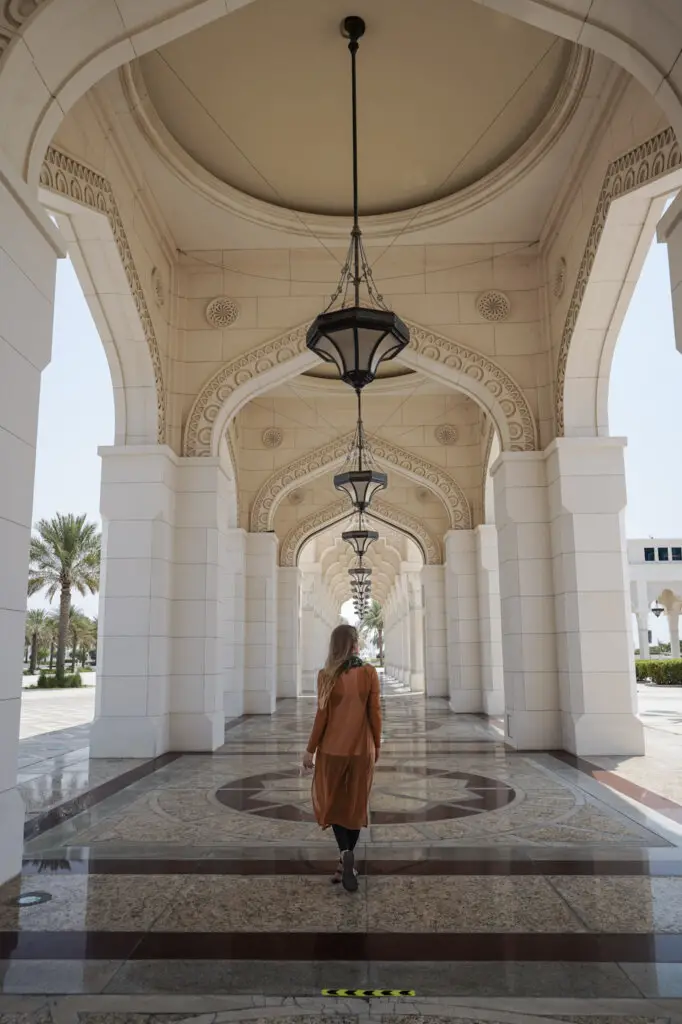
Benefits of Traveling Solo as a Woman in the Middle East
There are a few hidden and unexpected benefits of being a solo female traveler in the Middle East.
You may or may not know, in more traditional areas, it is unusual for any woman to speak to male strangers. Meaning, when Western men travel solo to these areas, they are typically unable to get a female perspective on life in that place, or interact with local women at all.
As a solo female, you will not only be able to speak to local women, but you’ll often be invited into conversations and regarded with curiosity. You’ll get to see a side of local culture reserved for only women and children – no men allowed.
I also find that, while yes I stay mindful of the men I interact with, most of them are incredibly respectful as well. Oftentimes the men will leave you alone or send some curious glances your way. But due to the traditions and religious culture, it is much less common than you may think to have to fend off unwanted male attention.
Have I ever had to fend off unwanted male attention in the Middle East? Honest answer, yes. But have I ever had to fend off unwanted male attention in Europe? Central America? Asia? Yes, yes, and yes. It’s not fair to project that solely on this region.

Where Should Women Go for their First Trip to the Middle East?
My advice would be to start in areas that are a bit more liberal or used to expats. This would include places like Turkey, Jordan, United Arab Emirates, or Qatar, for example.
Places like this are a bit more used to seeing Westerners, and will be a little bit more lenient on your clothing choices. That does not mean to wear whatever you want, but it won’t be their first time seeing a woman’s forearms or neck.
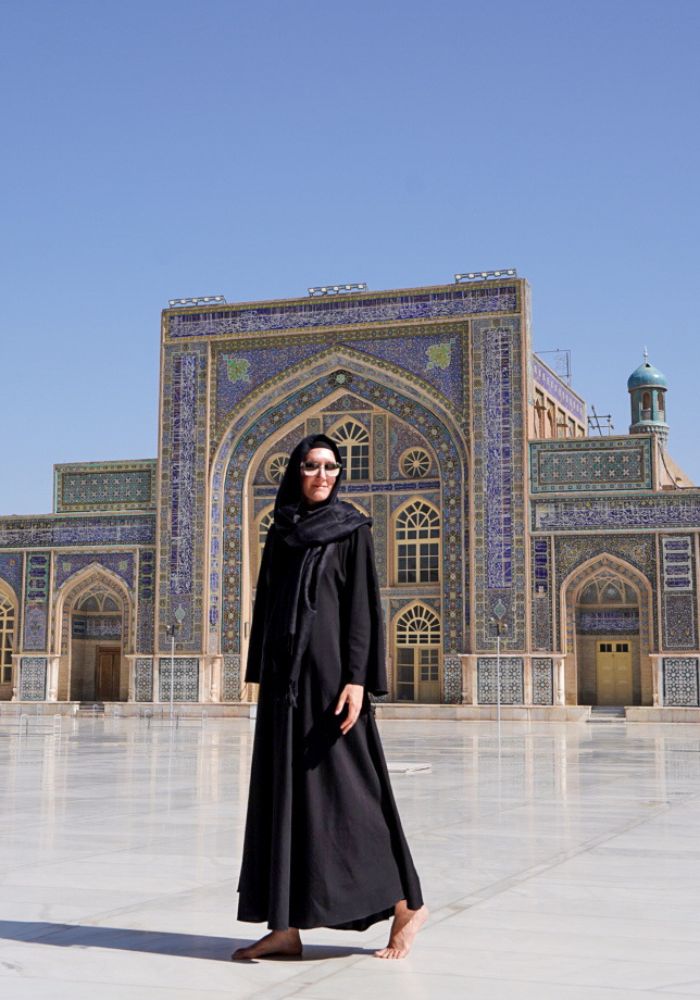
What Are Some More Advanced Destinations to Visit?
The more advanced destinations might be places like Afghanistan, Iraq, and Saudi Arabia.
Afghanistan because of the challenges with clothing, checkpoints, and regulations. Iraq for similar reasons.
And Saudi Arabia for the increased modesty required in religious areas like Medina and others. Note that places like AlUla are getting used to tourists, but because Saudi Arabia has only recently opened to tourists, there are still some extra challenges.
Final Thoughts on Women Traveling the Middle East
The Middle East is an incredible place to explore. Most travelers that visit this region are blown away by the nature, the hospitality, and the history.
Despite any initial hesitations you may have, traveling as a solo female in the Middle East is absolutely worthwhile. Your experience will be unique, and you are likely to come away with a newfound perspective on the truth of this region.
Yes, it may require just a bit more research and planning than other trips you taken, but I promise it is well worth it.
Pin Me for Later!

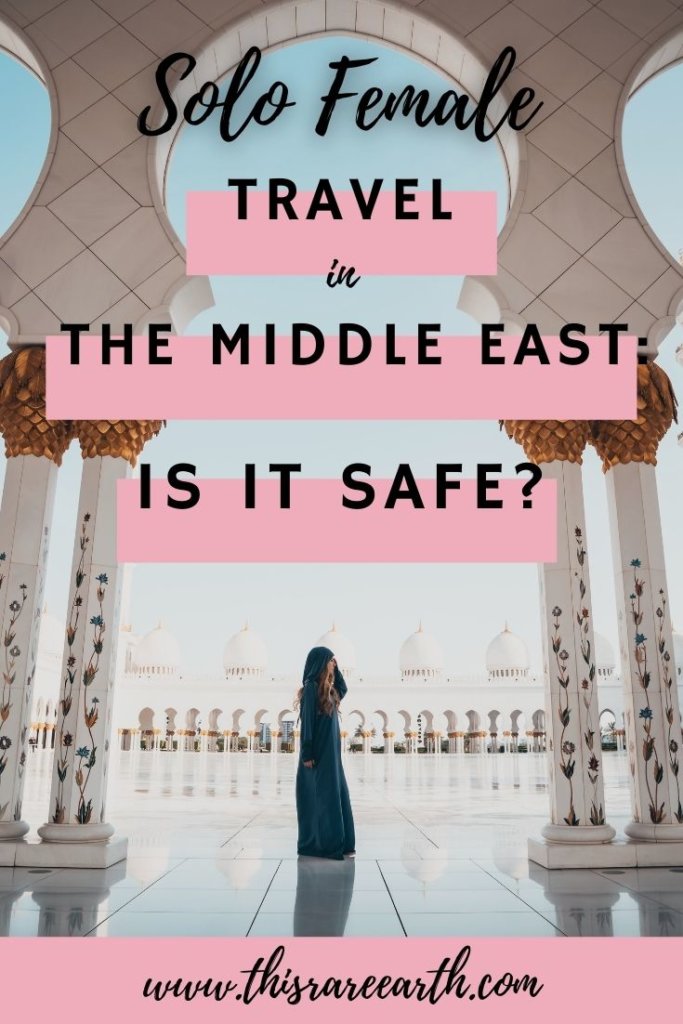




Leave a Reply